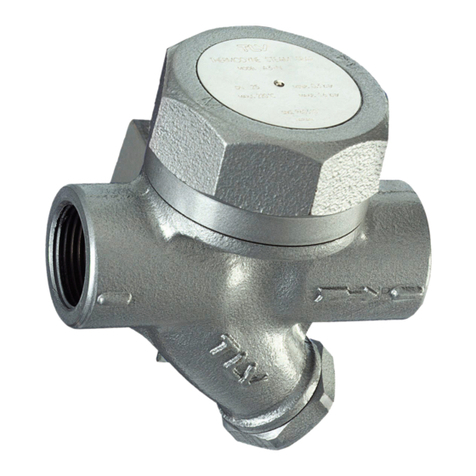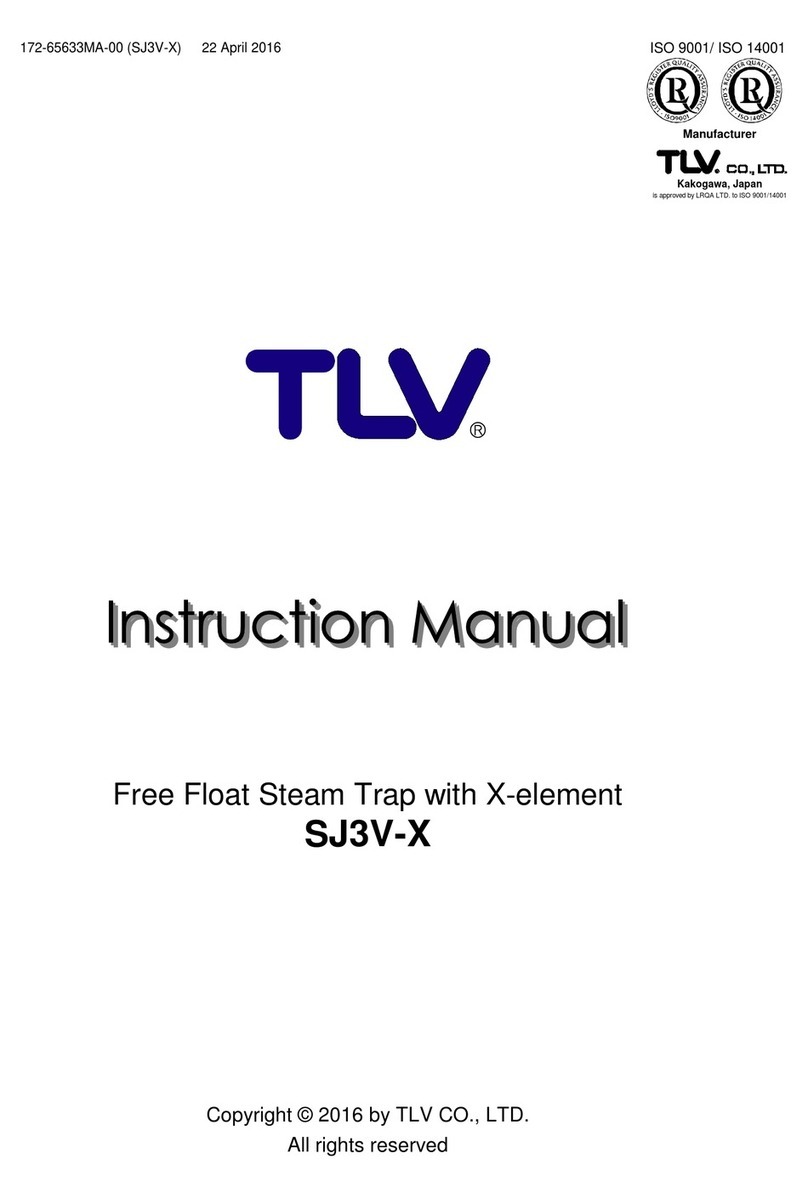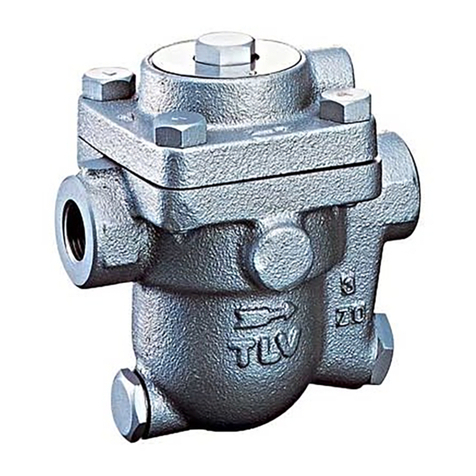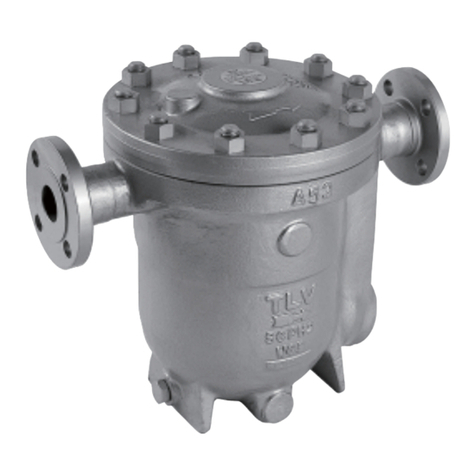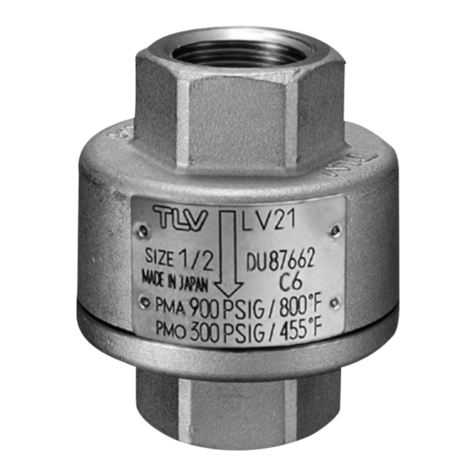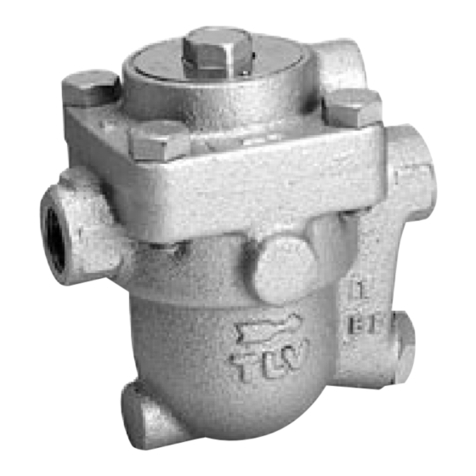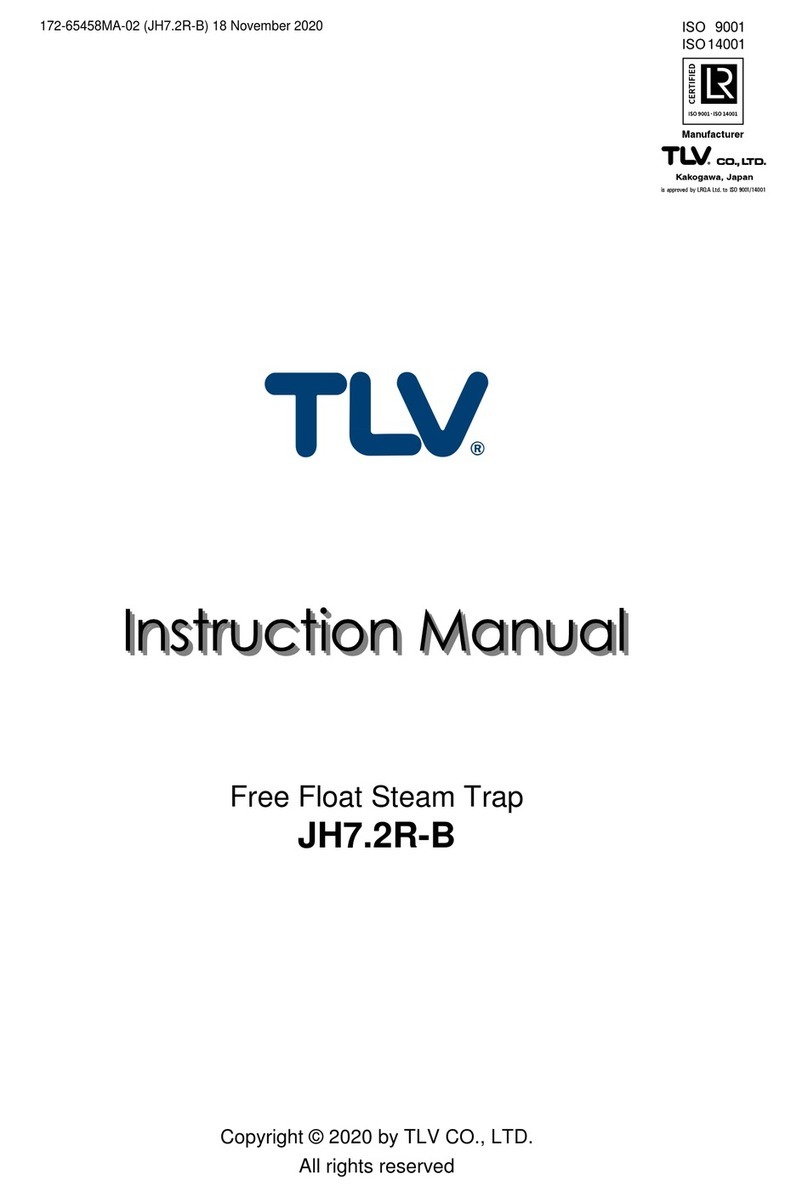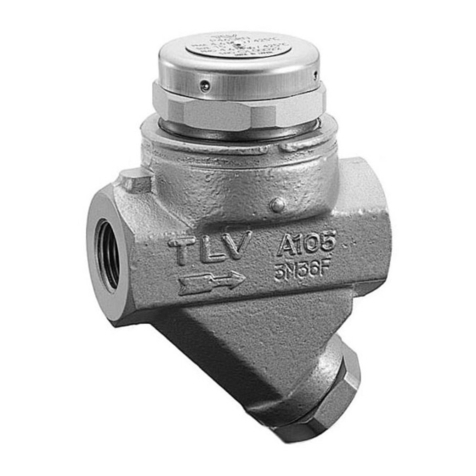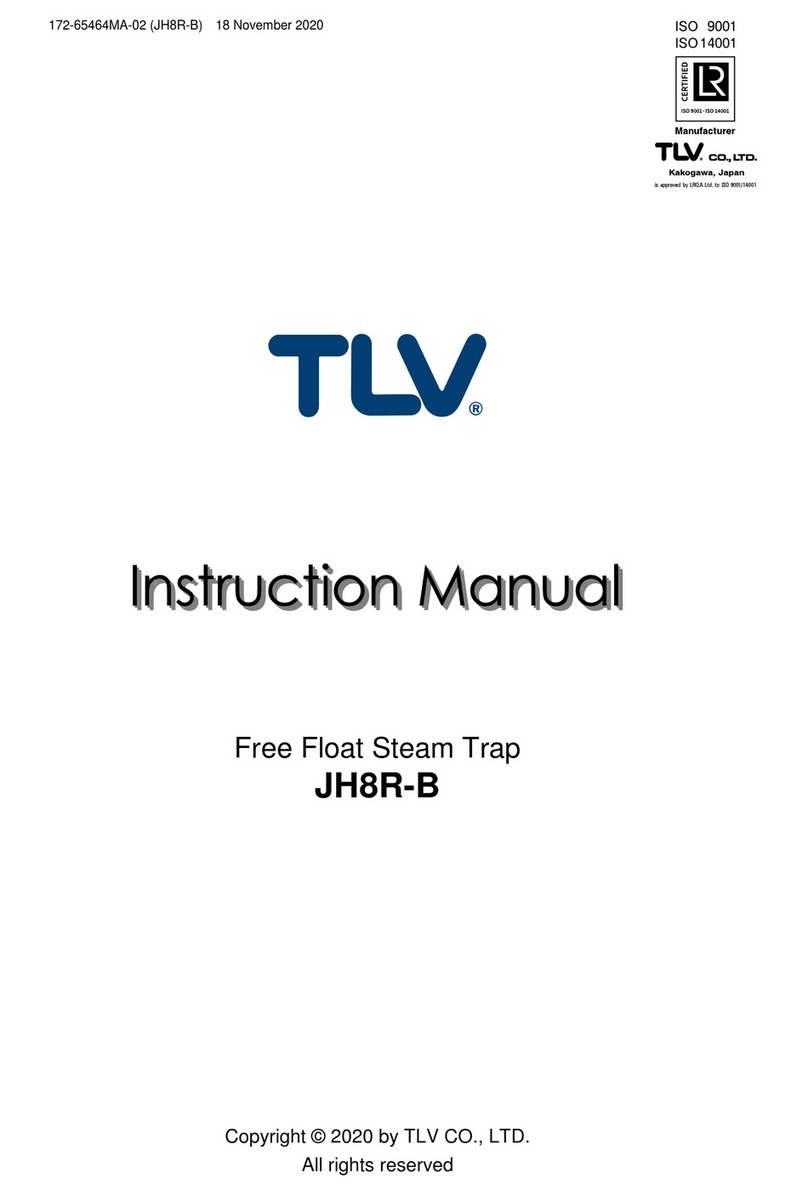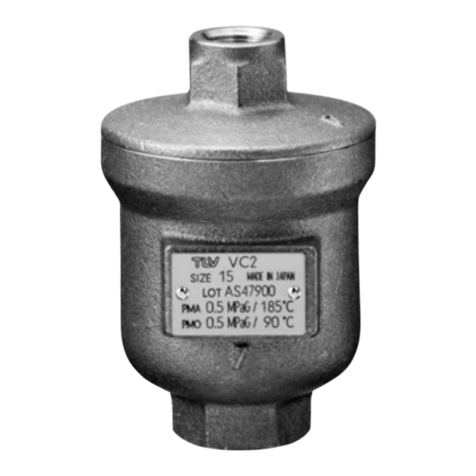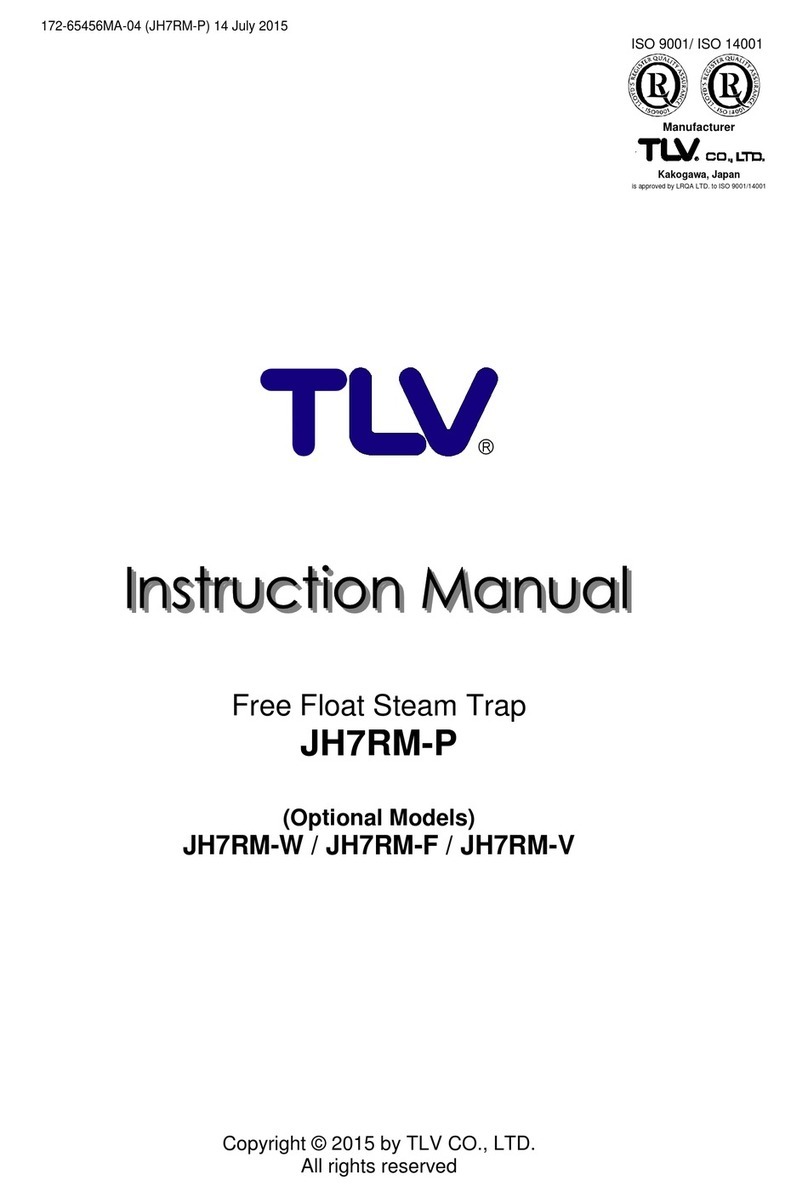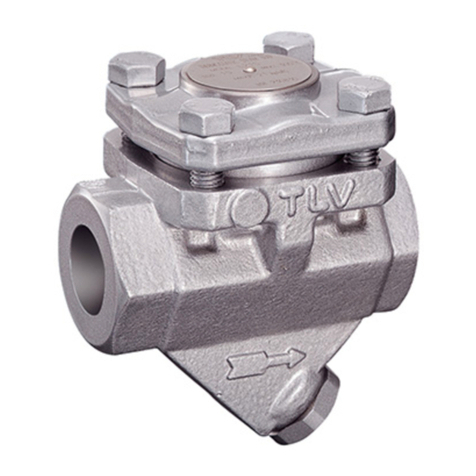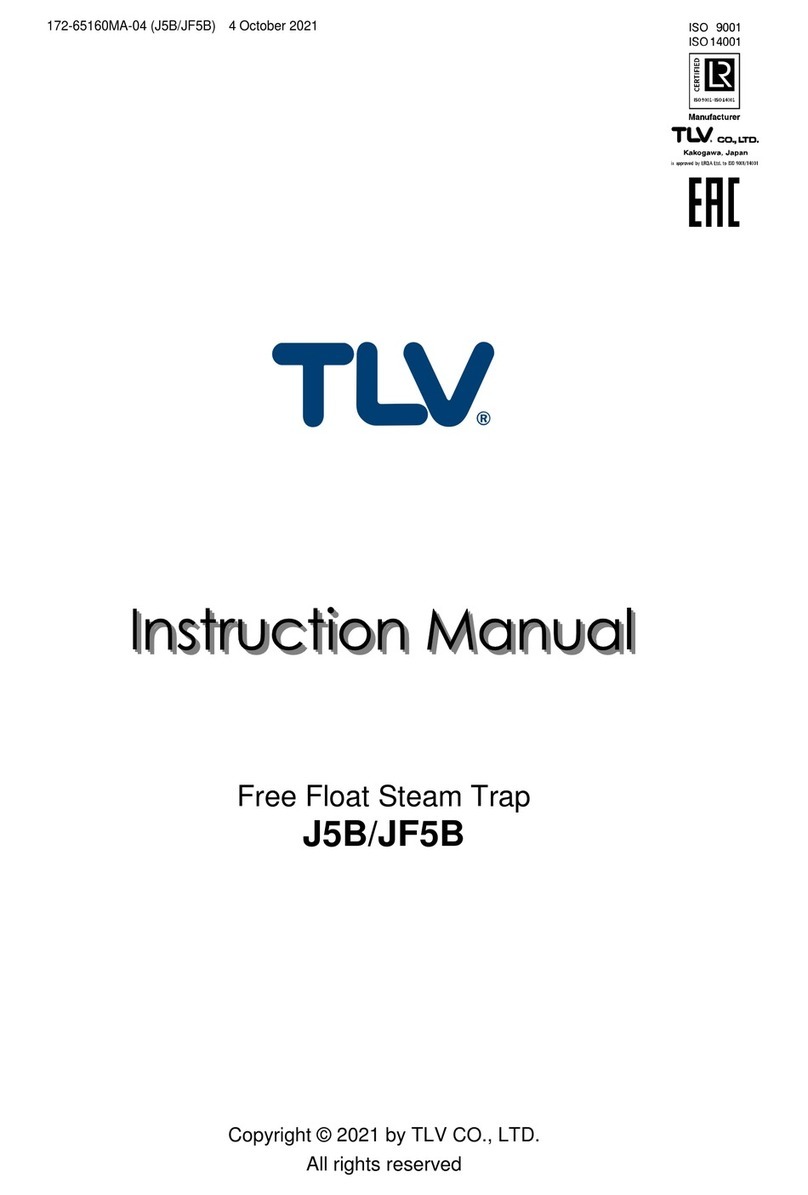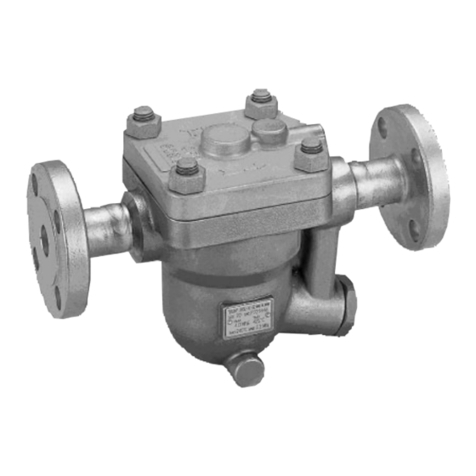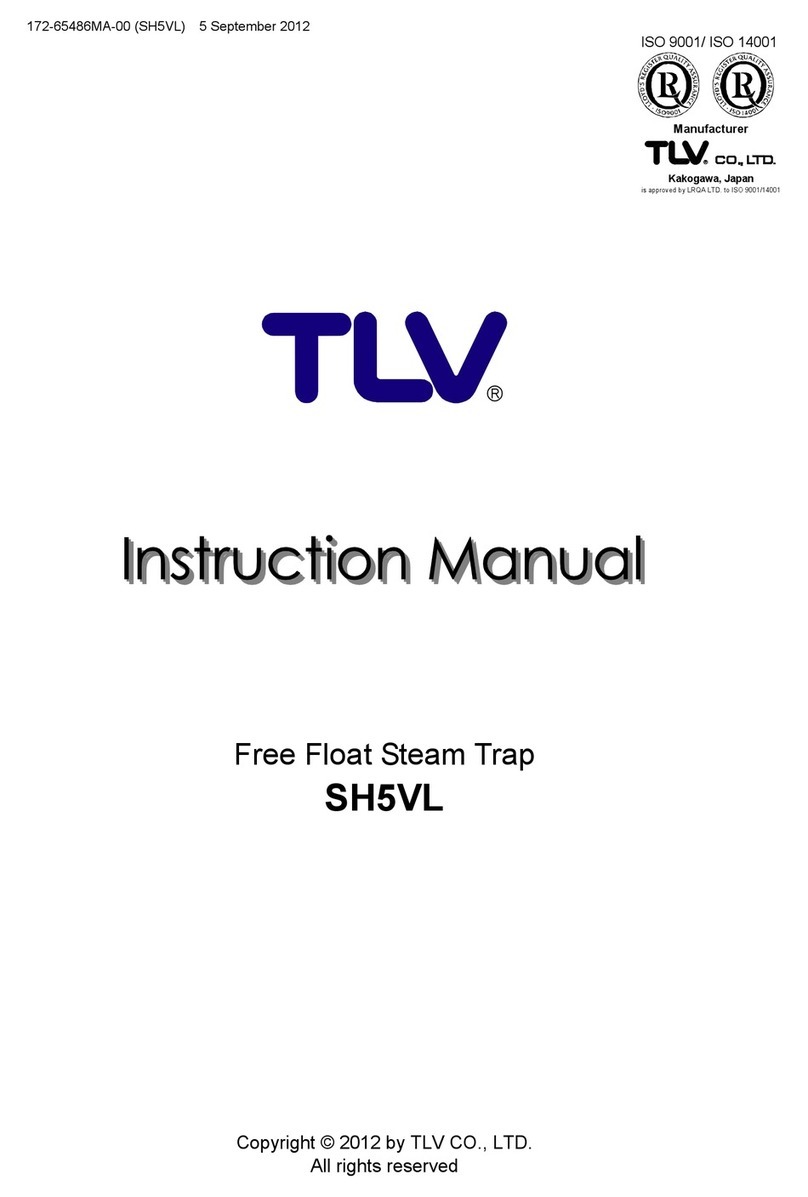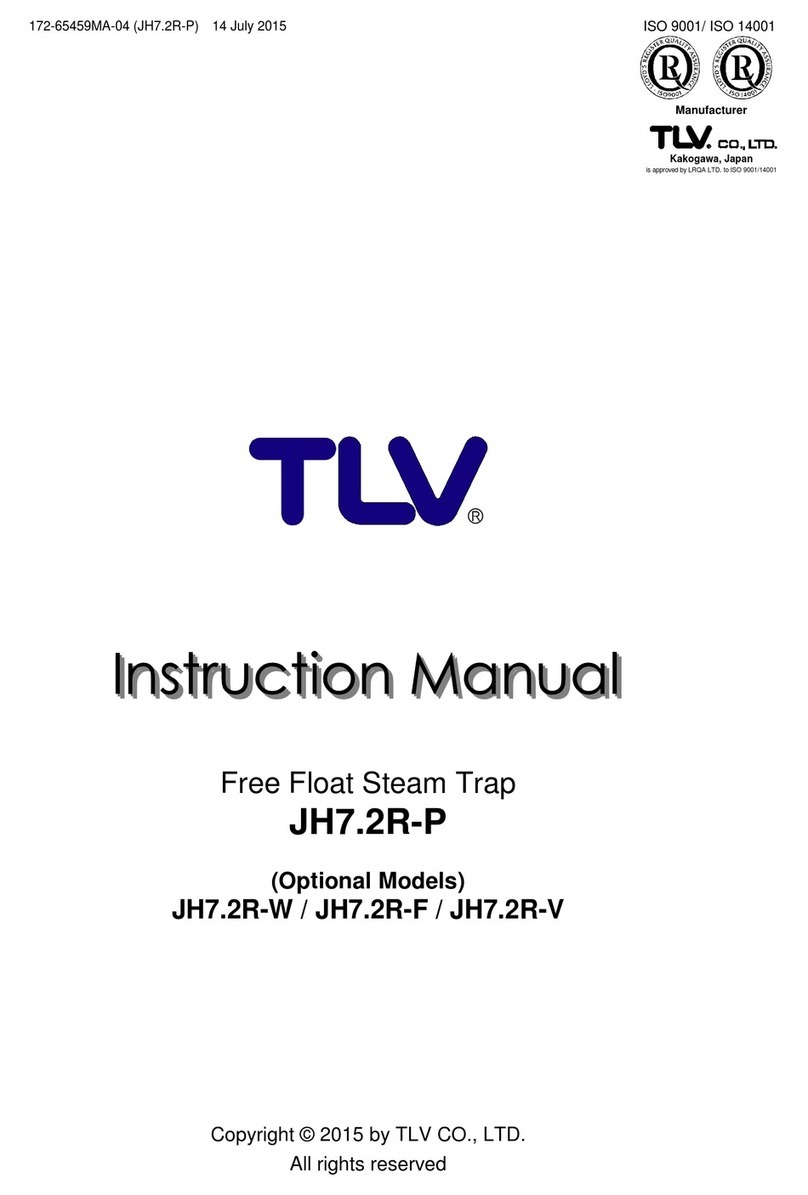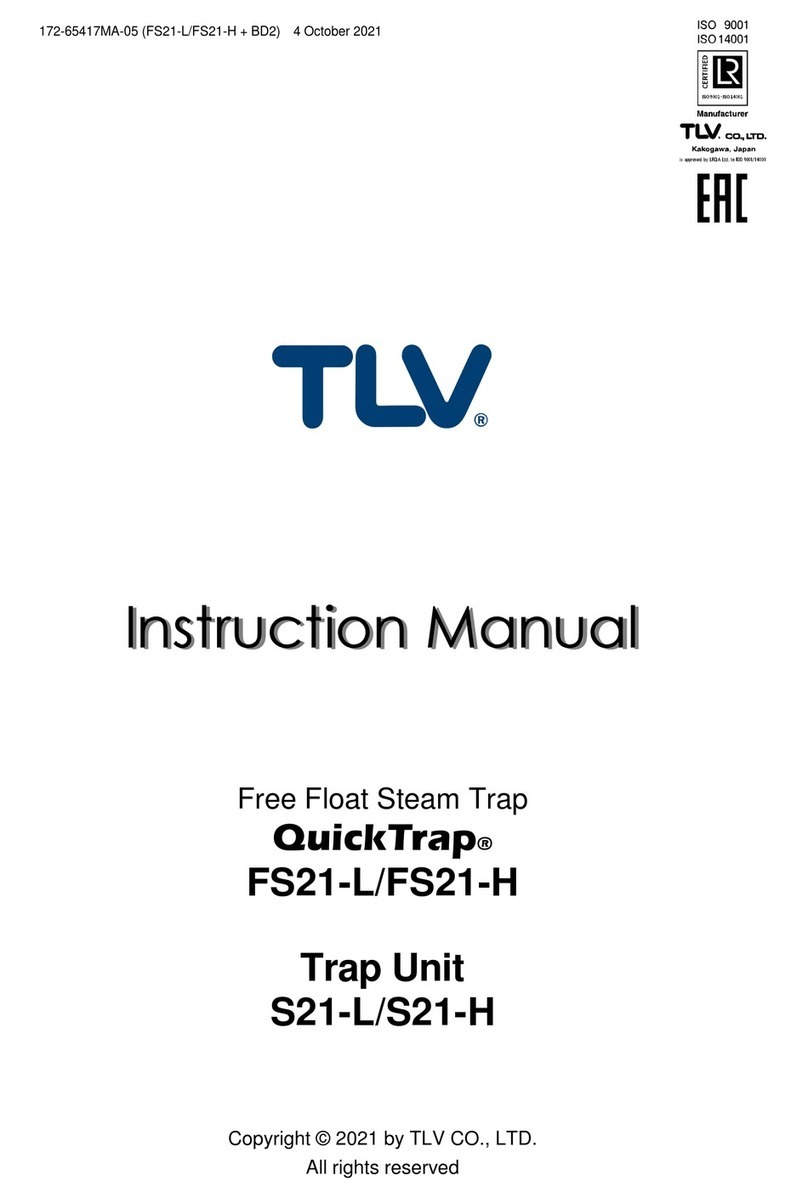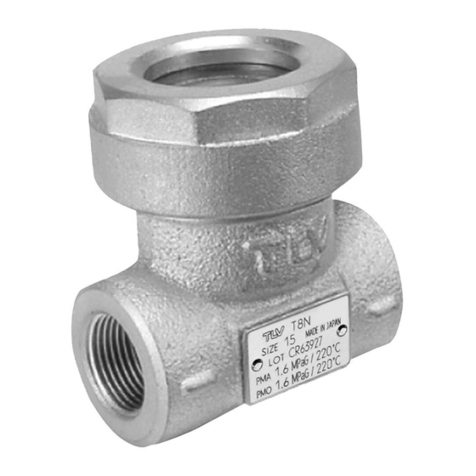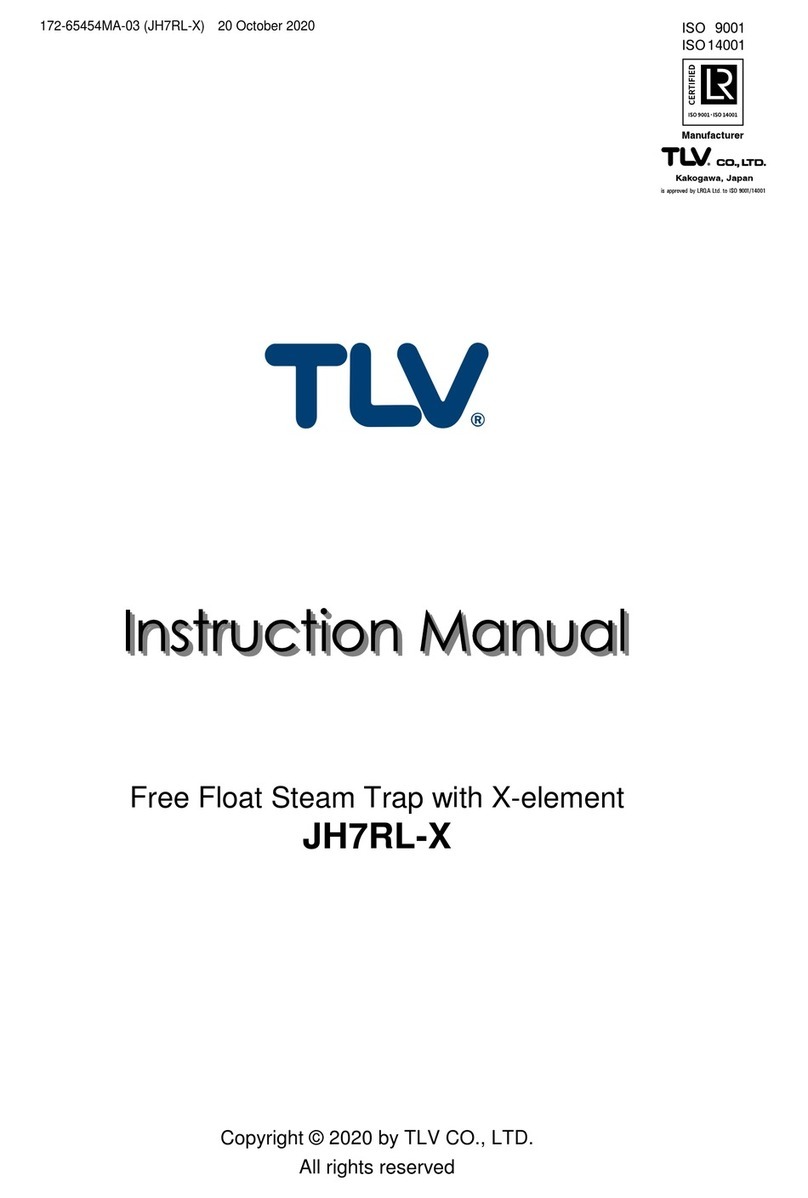
172-65381M-03 (LEX3N-TZ) 22 Apr 2009
7
Adjusting the Set Temperature
Do not remove cap nut or cover while trap is under pressure. Allow trap
body temperature to cool to room temperature before removing cap
nut or cover. Failure to do so may result in burns or other injury.
CAUTION
Always wear heat-insulated gloves when handling products with high
body temperatures, such as when in operation. Failure to do so may
result in burns.
CAUTION
Follow the procedure below to adjust.
1. For your safety, wear heat-insulated gloves or eye protectors, etc. to prevent
burns.
2. Close the external valve from which the steam and condensate flow to the trap
(the “inlet isolation valve”).
3. Close the external valve to which the condensate flows from the trap (the “outlet
isolation valve”).
4. Wait until the pressure between the inlet isolation valve and the trap equals
atmospheric pressure (when the trap body temperature cools to room
temperature).
5. Hold the cover with one wrench and use another wrench to slowly loosen the cap
nut carefully checking for any steam leaks that might occur. In the event steam
leaks are detected, immediately stop the work and proceed with maintenance
referring to “Disassembly / Reassembly” section.
6. Remove the cap nut.
7. Hold the adjusting screw in place with a flat-head screwdriver and loosen the
locknut slowly carefully checking for any steam leaks that might occur. In the
event steam leaks are detected, immediately stop the work and proceed with
maintenance referring to “Disassembly / Reassembly” section.
8. Remove the locknut.
9. Use a flat-head screwdriver to turn the adjusting screw to adjust temperature. To
raise the temperature setting, turn the adjusting screw counterclockwise. To lower
the temperature setting, turn the adjusting screw clockwise. Refer to set
temperature adjustment chart for the number of turns required from the “0”
position to reach the desired temperature.
10. After completing the adjustment, replace the locknut. Hold the adjusting screw in
place with a flat-head screwdriver and tighten the locknut securely.
11. Replace the cap nut and tighten it to the proper torque (see page 14). Hold the
cover with one wrench and use another wrench to tighten.
12. First fully open the outlet isolation valve slowly.
13. Slowly open the inlet isolation valve carefully checking for any steam leaks that
might occur. In the event steam leaks are detected, immediately close the inlet
isolation valve, then the outlet isolation valve, and repair the source of leakage.
14. Check the temperature setting by observing an inline temperature sensor or by
measuring the temperature at the wrench flat on the trap’s inlet side at least 30
minutes after supplying steam with the new setting. The trap set temperature will
be approximately 10 to 20 °C higher than the surface reading. If the resultant
temperature is not as required, repeat procedure from step “2” above.
15. Fully open the outlet isolation valve slowly.


















